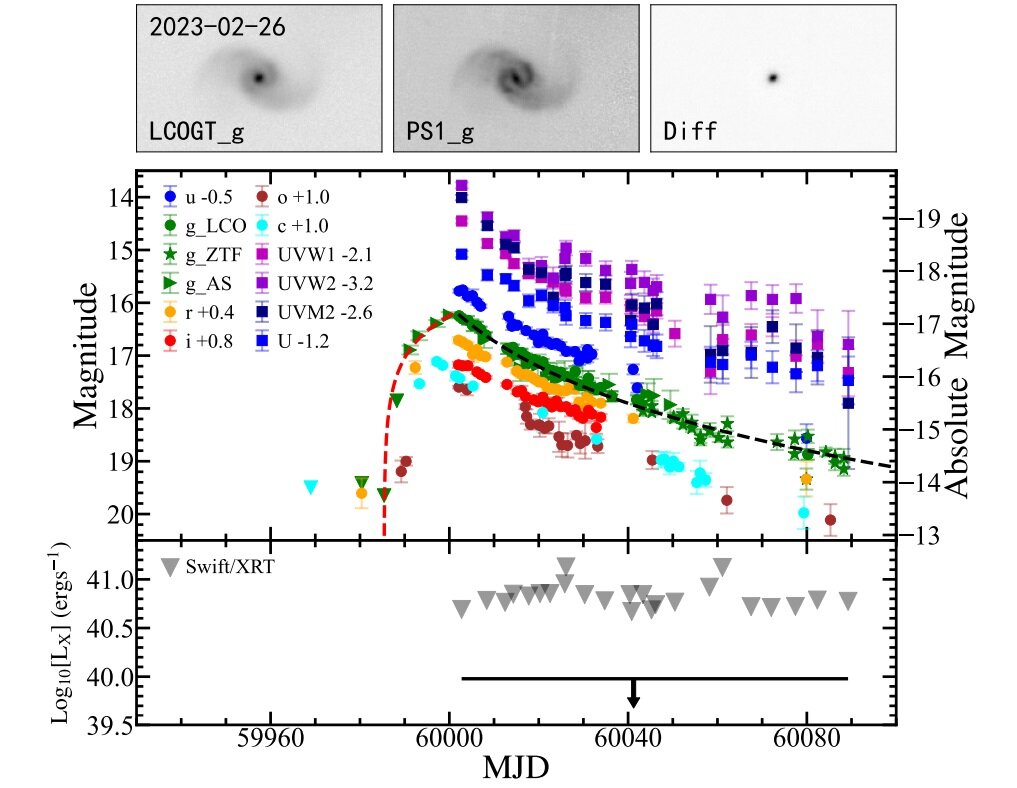Astronomers from the University of Science and Technology of China in Hefei report the discovery of a new faint tidal disruption event (TDE). The newfound TDE, designated AT 2023clx is the faintest and closest optical TDE so far detected. The finding was published July 10 on the preprint server arXiv.
TDEs are astronomical phenomena that occur when a star passes close enough to a supermassive black hole and is pulled apart by the black hole’s tidal forces, causing the process of disruption. Such tidally disrupted stellar debris starts raining down on the black hole, and radiation emerges from the innermost region of accreting debris, which is an indicator of the presence of a TDE.
For astronomers and astrophysicists, TDEs are potentially important probes of strong gravity and accretion physics, providing answers about the formation and evolution of supermassive black holes.
Now, a team of astronomers led by Jiazheng Zhu has found a new TDE in a nearby star-forming galaxy known as NGC 3799. Using mainly the Las Cumbres Observatory Global Telescope network (LCOGT) and NASA’s Neil Gehrels Swift Observatory, they conducted follow-up observations of AT 2023clx—a transient source initially identified in 2014. The observational campaign confirmed the previous assumption that AT 2023clx is a faint TDE.
“In this work, we report the discovery of a new faint TDE in NGC 3799, a main-sequence star-forming galaxy located at a distance of only ∼50 Mpc,” the researchers wrote in the paper.
2023-07-18 21:48:03
Link from phys.org


















